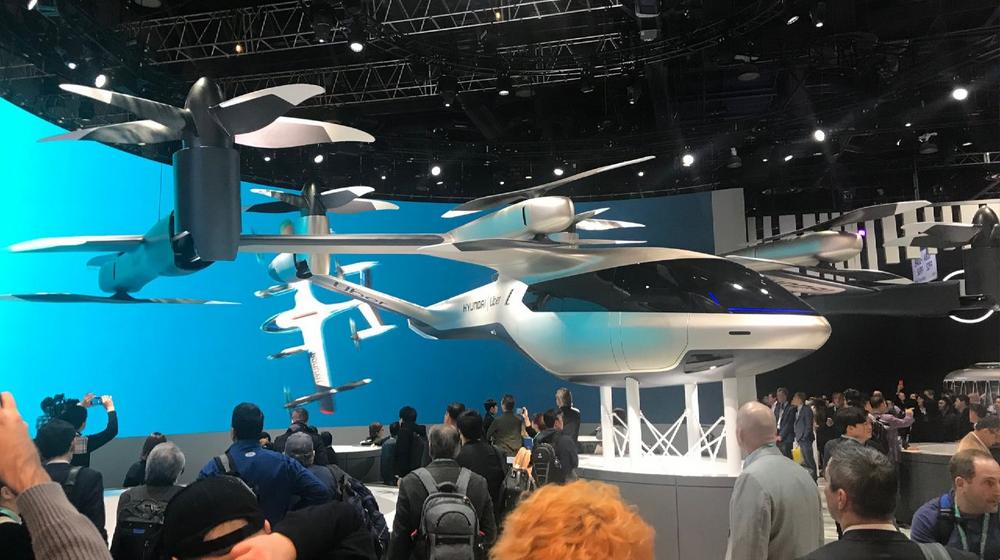There is hardly an exhibitor who would not have relied on large-format media use for stand design. However, there were major differences in the way the building and media (content) design was presented, which resulted not only from the communicative focus of the respective exhibitors, but from the different creative approaches as well.
In summary, three main approaches to the use of Mediatektur could be identified:
1. Interior design with media
Monitors, LED, and projection surfaces of different formats, sizes, and shapes were used as formative elements for the appearance of the trade fair stand. In doing so, often demanding content was reproduced across several media surfaces and different room depths.
Examples: Hyundai, Sony
2. Media installations
Furthermore, monitors, LED, or projection surfaces were used in such a way that they functioned as a complete installation: Partly in combination with structural elements
such as grandstands or seating landscapes and partly as a kinetic installation, which were projected with effective media content.
Examples: LG, Nissan
3. Real Object / Virtual Content
As an eye-catcher and effective didactic instrument for conveying (factual) content, real exhibits were directly combined with virtual, media content.
Examples: ZF, Mitsubishi
Interactive media in the form of touch-tables or tablets were more likely to be used on the second level, but with direct product or service reference and as an informative in-depth offer.
VR glasses were not perceptible as information technology; the high-quality new developments in this area were only presented as premium exhibits by their manufacturers, but were not used for staging. In contrast, Augmented Reality (AR) has been used very successfully in individual cases as a technology for conveying information.
Live, entertaining and benefit-oriented – staging and presentation
It was noticeable that in addition to its use as a platform for media content and attention elements, Mediatektur was increasingly used as a stage for live productions to convey information and significantly increase the experience factor. Examples include the combination with live shows, live or remote presentations, and the use as a media framework for product demonstrations or moderated expert talks.
Summary
Not only is the essential (brand) message important, but both the practical use and true added value for the customer play a big role in the successful communication. In doing so, the CES made it evident that live communication measures in the form of live performances, shows, and good media productions have become very important for exhibitors in order to involve their visitors in brand encounters that are experience-oriented, multi-sensual and, as a result, emotional and long-lasting.
KECK. Brand staging worldwide.
More than 30 years successfully on the market, 140 employees and passion for what we do – we are KECK. Our references are from just as wide a range of industries as our solutions. After all, ‘run of the mill’ is an alien concept to us. We realise projects always in an extraordinary and creative manner, perfectly attuned to our customers from the most varying of sectors.
In realising everything from extravagant trade fair stands and showrooms through to elaborate light and communication concepts, we can implement all you require to stage your brand successfully. Our wheelhouse includes the entire spectrum of services – strategy, consultation, design, construction and control. The most important step in every project is to understand the brand. We really get to its core and communicate it in a standardised and unique way. We not only stage brands, but also make them more successful.
KECK GmbH
Schelmenwasenstrasse 16-20
70567 Stuttgart
Telefon: +49 (711) 902140
https://www.keck.world
UNITLEITUNG
Telefon: +49 (7033) 3000-142
Fax: +49 (7033) 3000-9050
E-Mail: PETRA.SCHMIDT@KECK.WORLD
![]()
